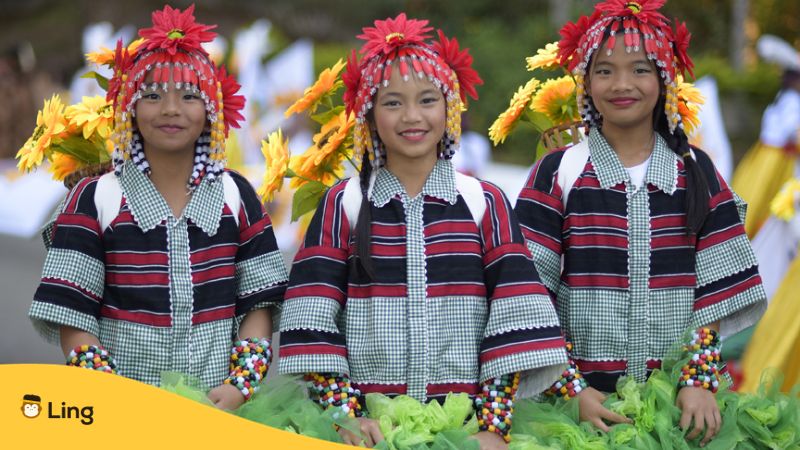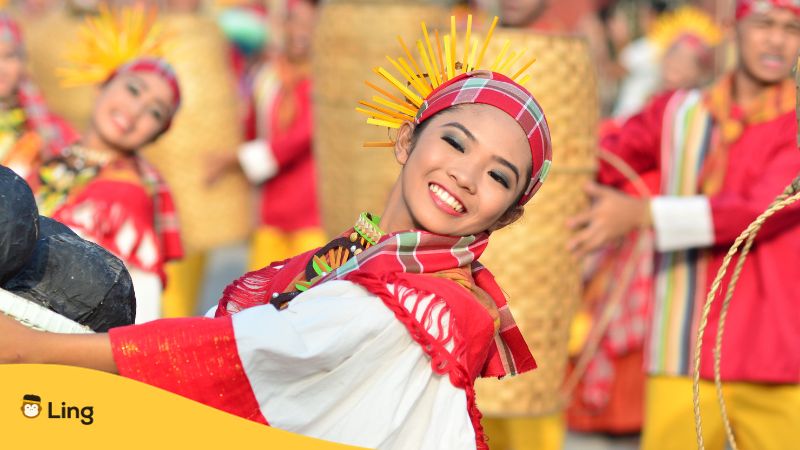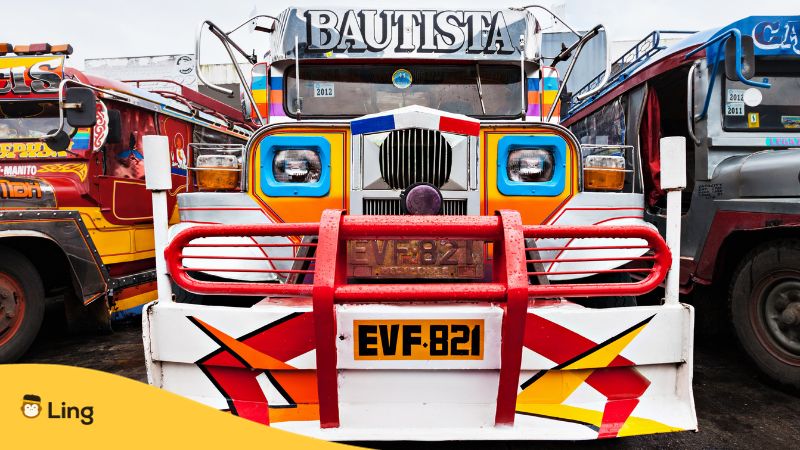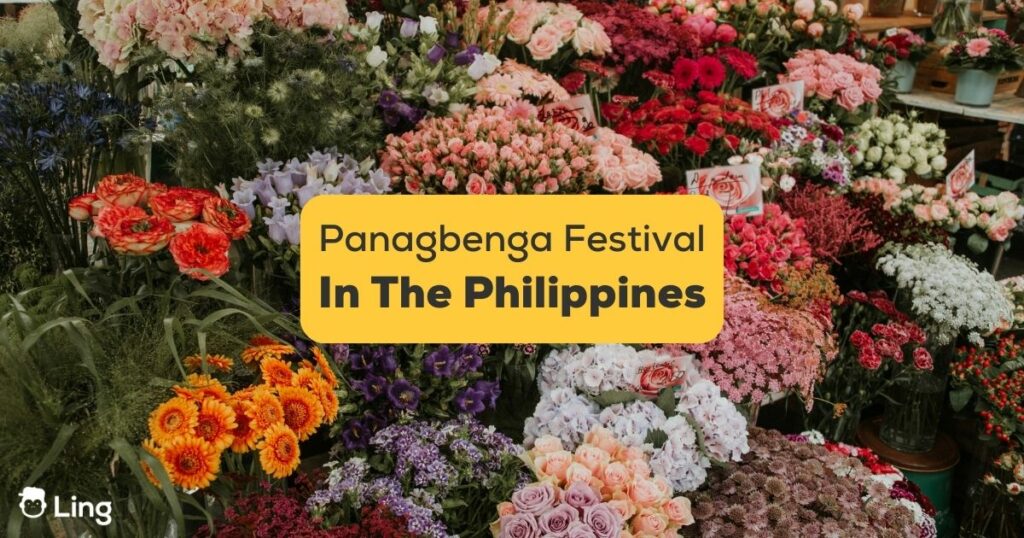Ever stumbled upon an event so enchanting it becomes the benchmark for all future adventures? That’s the Panagbenga Festival in Baguio for me. Still skeptical? Let’s journey through my memories.
You might be thinking: “A floral festival? How mesmerizing can it really be?” Well, let’s paint this picture. The sun delicately weaves through pine trees, casting a playful shimmer across the town. Despite being in tropical Philippines, there’s a refreshing coolness in the air. Baguio isn’t just alive; it’s pulsating. Not with the usual daily rush, but with a symphony of joy—infused with distant drumbeats and perfumed by nature’s freshest blossoms (or bulaklak in Tagalog). Welcome to the heart and soul of Panagbenga.
And the gastronomic delights? Streets transform into epicurean paradises, marrying local flavors with global zest. As for souvenirs, let’s just say my baggage allowance felt the strain on my way back.
Now, if you’re still pondering, “Is it truly a spectacle?” Stay with me, and by the end, you might just be rearranging your schedule to fit in this floral fiesta. Intrigued about this annual flower festival? Strap in, and let’s blossom forth! And if you’re planning to drive to Baguio for the festival, make sure to have an international driver’s license ready for a seamless journey.
What Is Panagbenga Festival?
Set against the cool hills of Baguio city, Panagbenga isn’t just a flower festival; it’s an experience. What does “Panagbenga” mean? In the local Kankanaey dialect, it elegantly means “season of blooming”. And trust me, it’s not merely a moniker—it’s the heart and soul of this month-long vibrant homage to life, resilience, and nature’s splendor.
Let’s hop in the time machine for a moment. The 1990s saw the birth of this Baguio flower festival, not from a place of joy, but resilience. The heartache of a devastating earthquake shook Baguio’s core. Yet, the indomitable spirit of its residents transformed pain into a dazzling celebration of unity, culture, and hope.
But don’t mistake this for just another party. Panagbenga is a cultural tapestry, honoring the profound history of the Cordillerans—the indigenous heartbeat of the Cordillera region. Think of it as a live exhibit, where traditions dance to life, native melodies serenade the streets, and art comes alive from Session to Harrison Road. The Grand Float Parade and Street Dancing Competition? Not merely events, but a lively fusion of age-old traditions and modern flair.
Now, flowers aren’t just the decor here—they’re the story. They’re not merely about Baguio’s bloom season, but a testament to its thriving spirit and unity. From parks to grandstands, flowers are everywhere—gracing parade floats, embellishing dancer costumes, or painting the town in vivid hues.
As Panagbenga unfolds, Baguio morphs into a magnet for adventurers, boosting its tourism like a blooming sunflower reaching for the sun. With thriving local businesses, bustling fairs, and captivating cultural displays, the city, draped in floral grandeur, showcases not just resilience but an unwavering passion for life, heritage, and sheer beauty. Intrigued? Baguio beckons!

Where Is Panagbenga Festival Celebrated?
The Panagbenga Festival unfolds in the charming city of Baguio. Often dubbed the “Summer Capital of the Philippines,” Baguio offers a cool retreat from the typically warm Filipino climate, owing to its high-altitude location.
Nestled within the Cordillera Central mountains on the northern part of Luzon island, Baguio stands about 1,540 meters (5,050 feet) above sea level. This unique altitude not only gifts the city its pleasantly chilly weather but also results in lush green landscapes and abundant floral growth – setting the perfect backdrop for the Panagbenga Festival.
The heart of the festival beats strongest along Burnham Park and Session Road, where most of the major events like the Grand Float Parade and Street Dancing Competition take place. These areas transform into vibrant hubs of activity, filled with lively crowds, music, and of course, a riot of colors.
Further enhancing the charm of the location, Baguio’s renowned pine trees stand as silent spectators, adding a distinct aroma to the festival air. Combine that with the city’s architectural gems, like the Baguio Cathedral and The Mansion, and you have a picturesque setting that enriches the Panagbenga experience manifold.

When Is Panagbenga Festival Celebrated?
Panagbenga Festival is celebrated throughout the month of February, a choice that couldn’t be more fitting. February heralds the end of the cool months in the Philippines and teases the beginning of summer. The weather is just right – not too cold, not too hot – making it the perfect ambiance for the festivities.
The month-long celebration kicks off with an opening ceremony, usually graced by drum and lyre performances from various schools. What follows is a series of events, each more enchanting than the last. From the Grand Street Parade to the Float Parade, from garden shows to trade fairs, the entire month is a crescendo of culture, color, and cheer.
However, the zenith of the festival typically falls on the last weekend of February. That’s when Baguio City truly comes alive with the major highlights of Panagbenga. So, if you’re planning a short visit, that’s the weekend to aim for.

How Is Panagbenga Festival Celebrated?
Ready to immerse yourself in a fiesta that blends tradition with modern flair? Let’s explore how Baguio City blooms during the Panagbenga Festival.
First on the docket? Street dancing. But this isn’t just any dance-off. As Session Road fills with rhythmic beats reaching all the way to Harrison Road, street dancers burst into vibrant life. Decked in kaleidoscopic attires, they breathe life into the Cordillera region’s indigenous dances. It’s an infectious celebration that lures both locals and wanderers, binding them in a dance of culture and joy.
Then there’s the Grand Float Parade, and let’s get something straight: this isn’t your neighborhood parade. Think of it as a moving art gallery. Each float, meticulously adorned with blossoms, paints a vivid narrative. It’s not just flowers on wheels; it’s Baguio’s history and soul cruising down the streets.
But wait, Panagbenga isn’t all floats and footwork. Throughout the month, the city dons its festive attire, offering a smorgasbord of cultural showcases, bustling fairs, and events. Whether you’re at the Melvin Jones Grandstand or wandering through Panagbenga Park, you’re in for a treat. Every nook becomes a stage, every cranny an exhibit.
And here’s the cherry on top: tourism. The festival isn’t just about celebration; it’s a strategic masterpiece. Crafted to lure travelers, Baguio sees a surge of guests eager to dive into its cultural tapestry. So, whether you’re here to spectate or participate, Panagbenga ensures you’re part of the magic, swaying to its rhythm and basking in its beauty. Ready for the revelry? Baguio’s doors are open!

How To Go To The Panagbenga Festival?
Making your way to the Panagbenga Festival is a thrilling experience. No wonder it attracts thousands of visitors every year! If you aim to join this vibrant celebration in Baguio City, here’s a guide complete with possible price ranges:
By Air
- Manila to Baguio via Clark: While Baguio lacks a commercial airport, the nearest significant hub is Clark International Airport in Pampanga. From Clark, Baguio is about a 2-3 hour drive. Several domestic airlines fly into Clark, with fares usually ranging from PHP 1,200 to PHP 3,500 one-way, depending on the season and how far in advance you book.
- Transport from Airport to Bus Terminal: Shuttles or taxis from the airport to the bus terminal may cost between PHP 300 to PHP 600.
By Land
- Direct Bus from Manila to Baguio: For those who prefer a direct route without the hassle of flights, direct buses are the best option. Numerous bus companies operate from Manila to Baguio. The journey might take about 5-6 hours. Prices vary based on the bus operator and service type, but you can expect to spend between PHP 450 to PHP 1,200 one-way. Remember, booking in advance is crucial during the Panagbenga season due to high demand.
- By Land via Private Vehicle: Driving on your own from Manila means taking the NLEX, SCTEX, and TPLEX highways. Cumulative toll fees for this route could be from PHP 600 to PHP 900 for a one-way trip.
Tips For Attending The Panagbenga Festival
Diving into the Panagbenga Festival? Here’s your ultimate guide to savoring it like a pro:
1. Beat the Clock
This festival is a magnet for globetrotters. So, to snag the best spots for the Grand Float Parade or the Street Dancing, set that alarm and arrive early!
2. Dress Smart
Baguio’s charm lies in its cool embrace. Layer up to adjust as the day unfolds, and those comfy shoes? They’ll be your best friend with all the strolling you’ll do.
3. Snack-Up
Sure, there’s a smorgasbord of food stalls. But trust me, those lines can test your patience. A water bottle and snacks? Your secret festival fuel.
4. Be Culture-Kind
Dive in, but dive respectfully. Don’t disrupt performances or obstruct views. And that local rocking their traditional attire? A polite ask before you snap that pic goes a long way.
5. Book Ahead
Baguio’s beds are hot property during Panagbenga. Seal your accommodation deal early to avoid last-minute hiccups and absurd prices!
6. Navigate Smart
With bustling streets and potential road closures, keep the festival schedule and city map handy. Walking or public transport? Often, they’re your best bet.
7. Stay In The Loop
Crowded festivals can slow down mobile networks. A local SIM might just be your savior. And for those slower moments? Opt for lite messaging apps.
8. Guard Your Treasures
With big crowds come nimble fingers. Use a sturdy bag, and stash critical items like passports in your hotel’s safe.
9. Speak Their Heartbeat
A dash of Tagalog can bridge worlds. A cheerful “Magandang Araw” or a grateful “Salamat” makes your festival journey more personal. Need a quick language primer? Check out apps like Ling.
Tagalog Words Related To The Panagbenga Festival
While the festival is rich in culture and heritage, there are numerous Tagalog words and terms associated with its celebrations. Let’s delve deeper into some of these words!
Sayaw sa Kalye (Street Dancing)
The term “Sayaw sa Kalye” translates to “Street Dancing.” Panagbenga is recognized for its captivating street dances that pulsate through the heart of Baguio City. This component is more than a mere spectacle; it represents a harmonious fusion of contemporary influences and indigenous traditions. Participants, adorned in vibrant costumes inspired by flowers and native themes, move rhythmically to the beats of the Cordillera region. This event mirrors the city’s spirit and provides a platform for the younger generation to connect with their roots.
Parada ng mga Bulaklak (Grand Float Parades)
“Parada ng mga Bulaklak” can be understood as the “Grand Float Parade.” An emblematic part of the Panagbenga Festival, this parade is a sight to behold. Various entities, from local businesses to schools and organizations, participate in creating elaborate floats, predominantly decorated with fresh, vibrant flowers from the region. These floats, combined with the cultural performances, make this event a major tourist attraction. It’s a testament to the city’s artistic flair and innovation.
Piesta (Festival)
“Piesta” is the Tagalog word for “Festival.” The Panagbenga isn’t just a singular event; it’s a month-long extravaganza filled with a variety of sub-events and attractions. Throughout February, Baguio becomes a hive of activity. From bazaars selling local crafts and food to cultural shows and competitions, there’s always something happening. The spirit of celebration, unity, and community reverberates through every street and corner.
Kasaysayan (History)
“Kasaysayan” translates to “History.” The Panagbenga Festival, while a celebration of the present, is deeply rooted in Baguio’s past. It was conceptualized as a beacon of hope and resilience following a major earthquake that struck Baguio in the 1990s. Over the years, it has evolved into a vibrant celebration, but its essence remains: to honor the city’s indomitable spirit and the rich cultural tapestry of the Cordillera region.
Turismo (Tourism)
“Turismo” means “Tourism.” The Panagbenga Festival plays an indispensable role in bolstering the tourism industry of Baguio. With its month-long festivities, the city witnesses a massive influx of tourists, both local and international. These tourists, while indulging in the festival’s offerings, also explore the city’s other attractions, contributing significantly to the local economy.
Bulaklak (Flowers)
“Bulaklak” is the term for “Flowers.” Central to the festival’s theme and name, flowers are omnipresent during Panagbenga. Beyond the grand parades and street dances, flowers find their way into shop displays, hotels, restaurants, and homes. They symbolize rebirth, beauty, and the city’s close bond with nature.
Mga Tindahan (Local Businesses)
“Mga Tindahan” refers to “Local Businesses.” Panagbenga isn’t just a cultural event; it’s an economic catalyst. Local enterprises, from artisanal craft shops to restaurants serving local delicacies, experience a surge in patronage. The festival offers these businesses a platform to showcase their products and services to a broader audience.
Pamana (Heritage)
“Pamana” signifies “Heritage.” Panagbenga is not just a celebration of blooming flowers; it’s a tribute to Baguio’s diverse heritage. From the traditional music echoing in the background to the age-old dance forms performed in the streets, the festival ensures the city’s cultural legacy is passed on and remembered.
Learn Tagalog With Ling
Delving into the annual flower festival celebrated in Baguio is like stepping into country’s vibrant heartbeat of resilience, unity, and culture. But, to genuinely feel its pulse? Speak their tongue!
Dive deeper into the festival’s spirit by embracing Tagalog, the Philippines’ national language. It’s one thing to be a spectator, another to become a part of the narrative. Elevate your Panagbenga journey with more intimate exchanges. How? Grab the Ling app from the App Store or Play Store. Because, at the heart of it, Panagbenga isn’t just about seeing—it’s about experiencing.
Here’s to a richer Panagbenga and to broadening horizons. Cheers!


































































